This article was co-authored by Pippa Elliott, MRCVS. Dr. Elliott, BVMS, MRCVS is a veterinarian with over 30 years of experience in veterinary surgery and companion animal practice. She graduated from the University of Glasgow in 1987 with a degree in veterinary medicine and surgery. She has worked at the same animal clinic in her hometown for over 20 years.
This article has been viewed 17,578 times.
Chlamydiosis—or Chlamydia psittaci—is a bacterial infection that can be contracted by many popular pet bird species, including parakeets. Chlamydiosis (also called parrot fever) is a relatively common bacteria for parakeets to contract, but should be considered serious, and can become life-threatening. Typical symptoms include respiratory or digestive problems, such as shortness of breath or diarrhea. Chlamydiosis can typically be treated by the antibiotic doxycycline, which will be prescribed by a veterinarian. It is also notable because this avian disease can be transmitted to humans.[1]
Steps
Diagnosing Chlamydiosis in a Parakeet
-
1Listen for respiratory problems. Chlamydiosis frequently produces respiratory problems in parakeets. Infected parakeets may suffer from sinus infection. Additionally, infected birds will show a general shortness of breath accompanied by strained or labored breathing.[2]
- Parakeets with sinus infections will display a “runny” nose, in which case a thin liquid will drip from their nostrils. Also look for signs that the bird’s nose is blocked, such as the bird panting and breathing through its mouth.[3]
- A common sign of chlamydiosis is discharge from the eyes, which is sometimes misdiagnosed as conjunctivitis.
-
2See if the parakeet has diarrhea. Chlamydiosis commonly attacks parakeets’ digestive systems, and moderate diarrhea is a common side effect. Note if your parakeet is eliminating waste more frequently than usual. Also note if the parakeet’s feces are an odd color: yellow, grayish, or green excrement can be a sign of Chlamydiosis.[4]Advertisement
-
3Note if your parakeet urinates excessively. If you suspect your parakeet has contracted Chlamydiosis, watch to see if it produces excessive amounts of urine. Birds with Chlamydiosis often urinate an excessive amount.[5] You should be able to identify this symptom relatively easily by watching the bird’s daily urinary habits.
- This condition, known as polyuria, can be a symptom of various types of bacterial infection, and does not by itself indicate a case of Chlamydiosis.
-
4Note signs of general sickness or discomfort. Parakeets that have become infected from Chlamydiosis often feel poorly in general and act unwell. Infected birds may display lethargy, and are likely to listlessly sit around their cage. Infected parakeets may also lose their appetites (which may lead to weight loss) and their feathers may become unkempt and ruffled.[6]
- Parakeets with Chlamydiosis may also produce discharge around one or both of their eyes. One or more of their eyelids may also swell.
Treating Chlamydiosis in a Parakeet
-
1Take your parakeet to a veterinarian. Chlamydiosis can be a serious bacterial infection, and is not an illness that bird owners can cure at home. A veterinarian will be able to correctly diagnose your parakeet with Chlamydiosis by performing a fecal, blood, or tissue analysis, as well as possible oral swab testing.
- While the vet will collect blood and tissue samples, they may ask you to bring in a sample of the bird’s fecal matter.
- The vet will be able to prescribe the necessary medication in order to cure your bird. Never give a parakeet—or any other animal—an antibiotic or other medication without first receiving a diagnosis from a licensed veterinarian.
-
2Ask the veterinarian if doxycycline is an appropriate medication. Many cases of Chlamydiosis are treated with the antibiotic doxycycline.[7] Tetracycline is another antibiotic which is commonly used in the treatment of Chlamydiosis.
- Doxycycline can have negative side effects on birds following long-term use. Side effects include problems with bacteria growth in the digestive tract.
- While a parakeet—or any other bird—is being given tetracycline, do not give the bird any food or supplements containing calcium. Calcium will diminish the effectiveness of the antibiotic. This is not a concern for birds taking doxycycline.
-
3Decide on a method to give your parakeet the antibiotic. Talk with the veterinarian and decide how the doxycycline (or other prescribed antibiotic) should be given to your sick parakeet. Depending on your and your veterinarian’s preferences, the tetracycline can be administered through an intramuscular or intravenous injection. Doxycycline can also be administered orally, or mixed into the parakeet’s food.
- Whichever treatment method you and your vet decide on, the antibiotic will likely need to be administered over the course of 45 days. Monitoring your parakeet’s intake of the medication can be more difficult when it is mixed into food.
- If you choose to administer the drug via injection, you’ll need to take your bird to the vet three times a week for 6 weeks for the shot. If the doxycycline will be administered orally, your vet can give you tips on how to feed the pill to your parakeet.
-
4Ask about administering medicated water. Delivering an antibiotic via injection or force-feeding can be difficult for the owner and stressful for the infected parakeet. To avoid this problem, various companies manufacture medicated water, which your parakeet can drink to treat its Chlamydiosis. Ask your veterinarian if they recommend this course of treatment.[8]
- If you dose your parakeet this way, monitor your bird’s water intake. Some birds may not drink enough if the medication alters the taste of their water. It’s most important that your bird get enough water to get well. You can find another dosage method, if necessary.[9]
- While treatment with medicated water is usually effective for parakeets, there’s a small risk that your parakeet may receive an inadequate dosage on some days. Ask your veterinarian about how to avoid this.
Preventing Parakeets from Contracting Chlamydiosis
-
1Clean your parakeet’s cage daily. This is a common-sense rule, but your parakeet will have a much lower risk of illness (including Chlamydiosis) if its cage is kept clean. You can clean the cage by wiping it down with a rag and a common household disinfectant. Also remove all fecal matter, and make sure that your bird is kept in a well-ventilated environment.
- If your parakeet is being treated for a case of Chlamydiosis, it can re-catch the illness from bacteria within its cage. Fully clean the bird’s cage to prevent a second case of the disease.
-
2Test all new birds entering an aviary or bird store. If you own or manage a pet store (specializing in birds) or an aviary, a Chlamydiosis outbreak presents a serious threat. To prevent this—and to keep your current birds safe—quarantine all new, incoming birds. Observe them for signs of Chlamydiosis, and ask a veterinarian or bird specialist to test the birds for the bacteria as well.
- Once a new bird has been diagnosed as free from Chlamydiosis, you can release it into the general bird-containment area.
-
3Keep your parakeet away from infected birds. Birds already infected with Chlamydiosis will excrete the bacteria in their feces and liquid nasal discharge. The bacteria will then enter the air, at which point uninfected birds can inhale the bacteria and contract the illness.[10] Put infected parakeets into a separate cage from other, healthy parakeets. As an extra precaution, put the infected bird’s cage in a different room of your house, if possible.
- If your parakeet is kept away from infected birds, it will have a much lower likelihood of catching the disease.
- It’s also important to keep the sick parakeet away from people with weak immune systems, as humans can catch the infection. The young, elderly, pregnant, and ill should not handle or interact with a bird that has Chlamydiosis.
- Chlamydiosis can also be transmitted directly by beak-to-beak contact between two birds.
Warnings
- It’s possible for Chlamydiosis to go into a dormant phase following treatment. In this case, the disease will not be fully cured, but will simply be inactive. Dormant Chlamydiosis can recur months or even years after you finish administering an antibiotic.[11]⧼thumbs_response⧽
- There is a risk that Chlamydiosis can be passed from birds to humans. For most healthy humans, the risk is very low. However, if someone’s immune system is already compromised, the risk of infection will increase.[12]⧼thumbs_response⧽
References
- ↑ http://www.melbournebirdvet.com/chlamydia/
- ↑ https://www.beautyofbirds.com/psittacosis.html
- ↑ http://www.melbournebirdvet.com/chlamydia/
- ↑ https://www.beautyofbirds.com/psittacosis.html
- ↑ https://www.beautyofbirds.com/psittacosis.html
- ↑ https://www.beautyofbirds.com/psittacosis.html
- ↑ http://www.melbournebirdvet.com/chlamydia/
- ↑ http://www.birdclinic.net/avian5.htm
- ↑ http://www.melbournebirdvet.com/chlamydia/
About This Article
To treat Chlamydiosis in your parakeet, watch for common symptoms like shortness of breath, a runny nose, eye discharge, diarrhea, excessive urinating, and lethargy. If your bird has any of these problems, take it to the vet as soon as possible so they can diagnose it and recommend treatment. Once your parakeet has been diagnosed, the vet may prescribe a round of antibiotics for you to give to your bird, which last about 45 days on average. Depending on what you prefer, the antibiotic can be administered orally, intravenously, or mixed in with your parakeet’s food. To learn how to prevent your other parakeets from getting sick, read more from our Veterinary co-author.
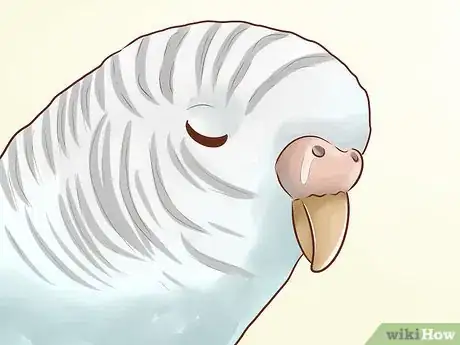
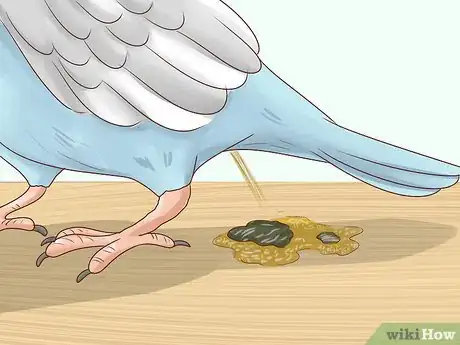
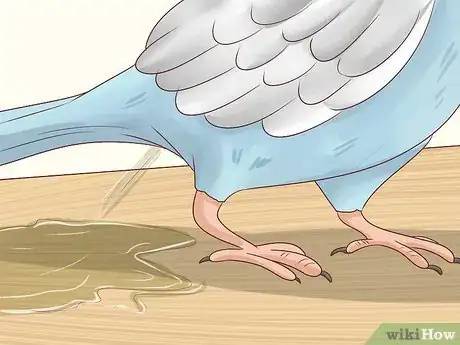
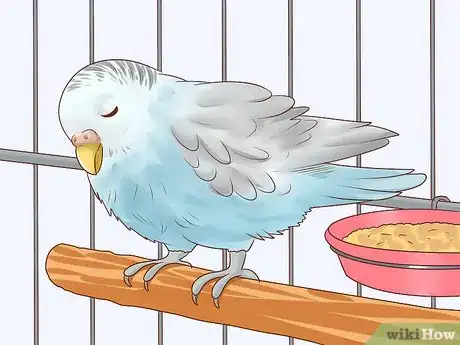
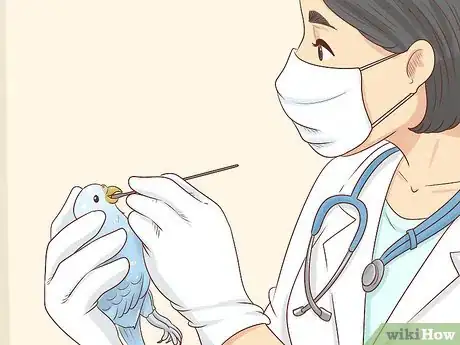
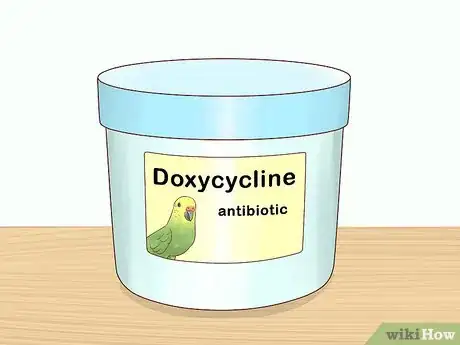
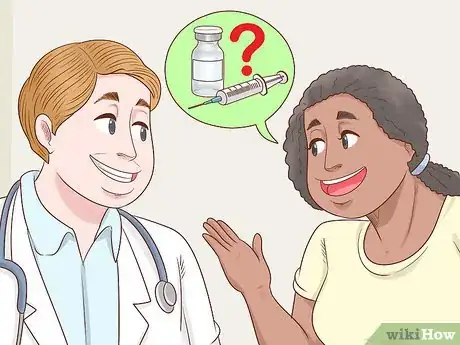
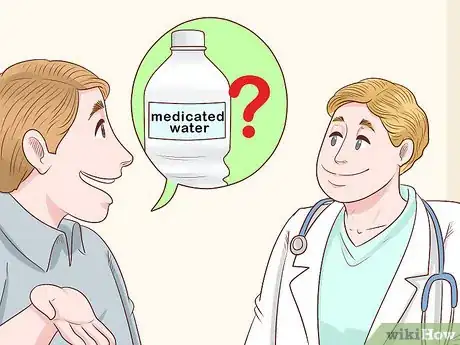
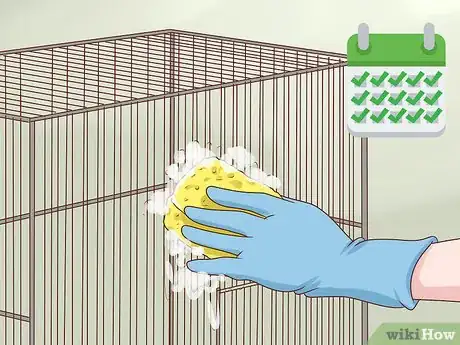
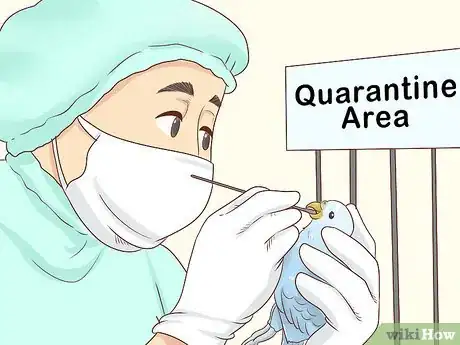
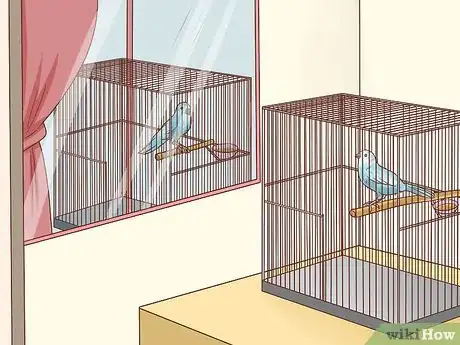
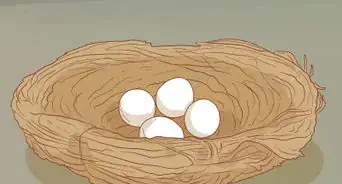
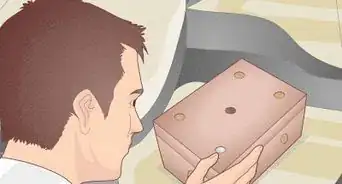
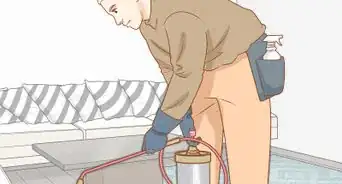
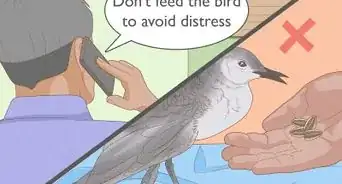
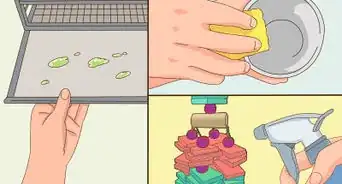
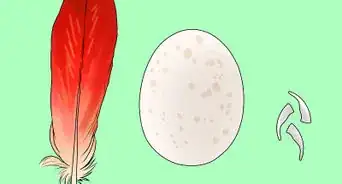

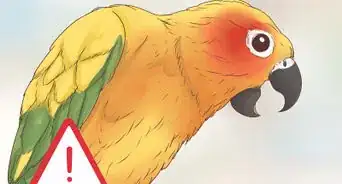
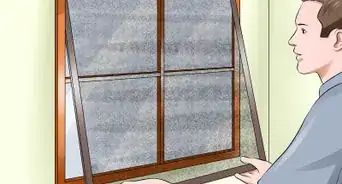
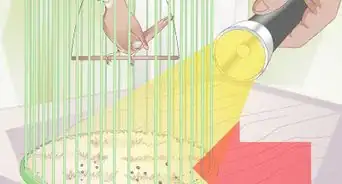

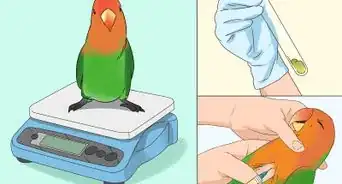







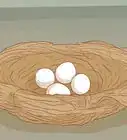
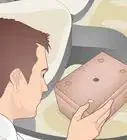
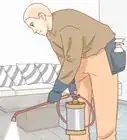
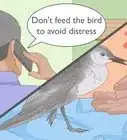



































Medical Disclaimer
The content of this article is not intended to be a substitute for professional medical advice, examination, diagnosis, or treatment. You should always contact your doctor or other qualified healthcare professional before starting, changing, or stopping any kind of health treatment.
Read More...